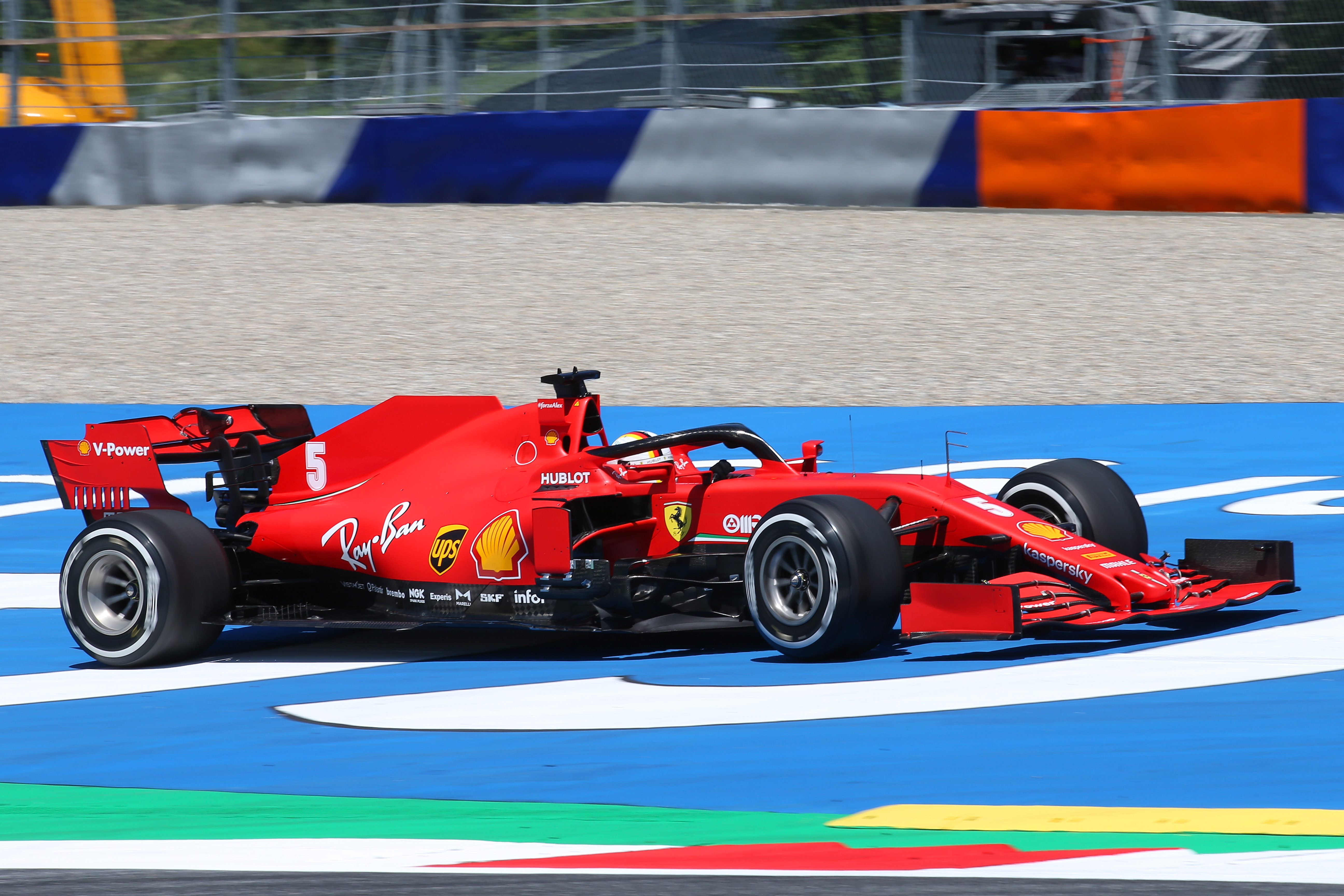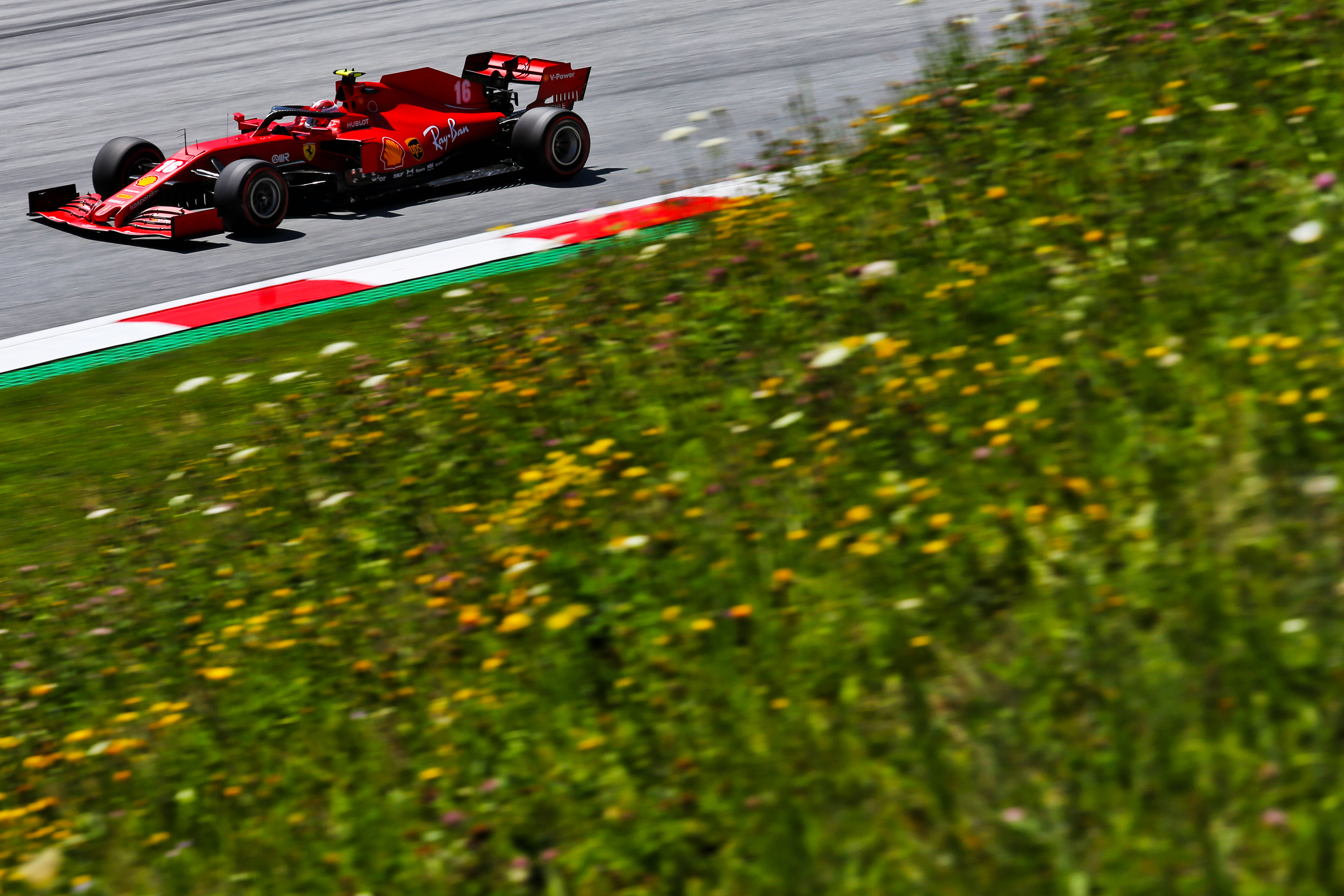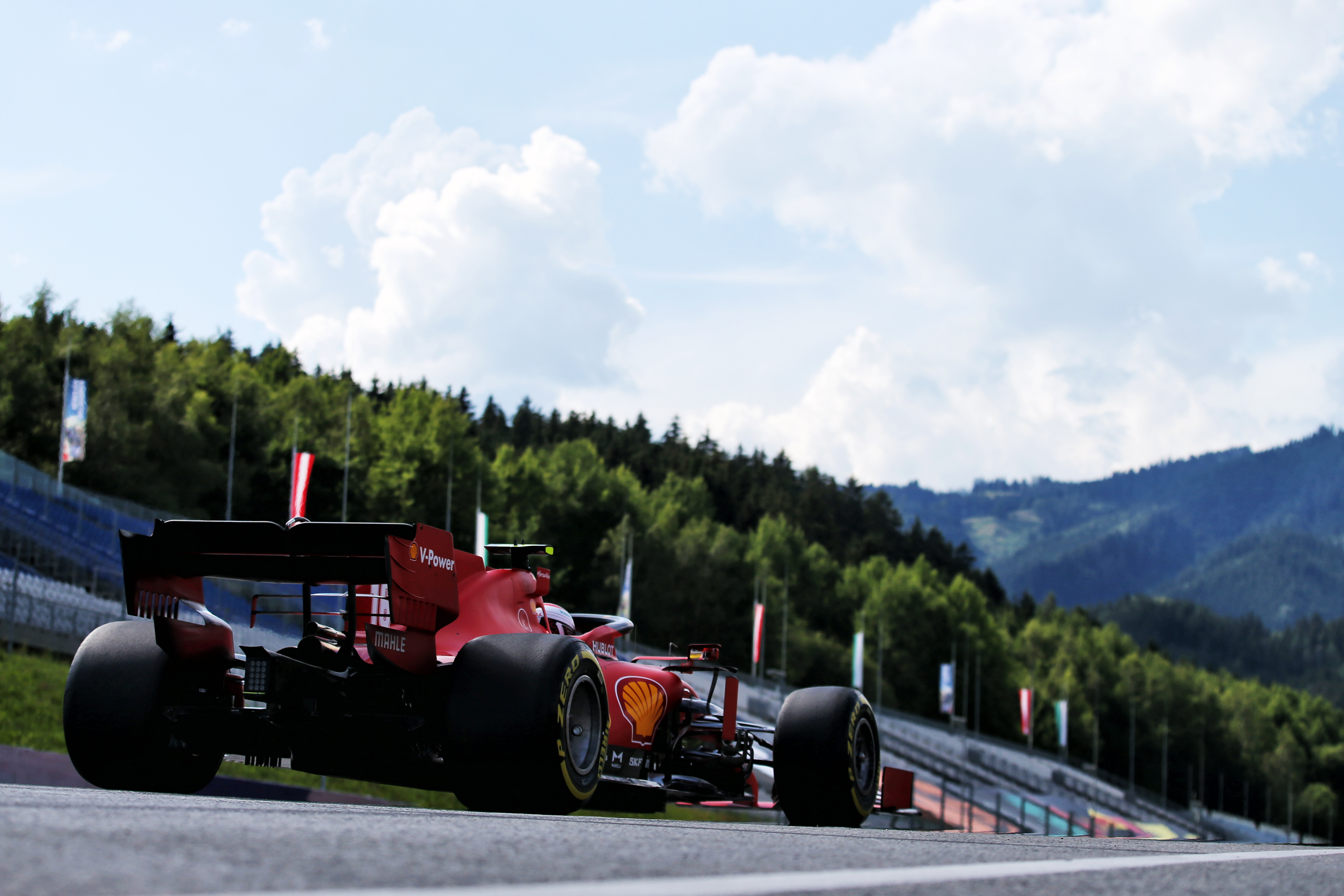Up Next

Sebastian Vettel couldn’t have cut a more enthusiastic figure for someone who had just ended Friday practice 16th-fastest. Partly because without a laptime disallowed for track limits he’d have set a near identical time to team-mate Charles Leclerc, and partly because he found his car “a lot better” to drive than in a miserable grand prix five days prior.
A new front wing and floor was never expected to be a “silver bullet” that would vault Ferrari from fifth-fastest one weekend to pole contender the next, admitted team boss Mattia Binotto last week.
But after a muddled second Friday at the Red Bull Ring, where the competitive order was clouded by some teams pushing a lot harder than others just in case FP2 ends up setting the grid, there seemed to be grounds for cautious optimism within the team.
“If you look at the timing sheet I got the lap deleted and it was not a great day for laptimes, but I think some people maybe anticipated rain tomorrow and just prepared in case this is the quali,” said Vettel.
“I think on our side the main thing was to look after the upgrade we brought.
“Step by step we put stuff on and it seems to be positive, now we need to find the best window where the car is happiest.”
That tallies with what Binotto said on Friday evening, that Ferrari was focusing so much on back-to-back running – even shunning a second run on soft tyres in FP2, sacrificing performance chasing to get an extra medium run into the programme – it wasn’t optimising its car’s potential.
It actually bears a striking resemblance to Ferrari’s messaging around the first week of pre-season testing, which says a lot about the trouble Ferrari’s found itself in. The second weekend of the season should have much in common with the first test in February…
But it’s all for a good reason, and Vettel’s new-found happiness was the first hint at Ferrari making some kind of progress. Although it seemed to come at a cost for Leclerc, who said it had been a “difficult day”.
Binotto said: “Sebastian was uncomfortable during the last race, he said the car was undriveable.
“Today he was more comfortable, he got the right feeling from the rear of the car under braking. A direct comparison was difficult but certainly he was a lot more comfortable.
“On the other side, I think Charles is not too happy with the set-up and the car balance today.
“We were working on aero comparison, we didn’t work much trying to improve his set-up.
“It’s a mixed feeling because on his side he would have improved but we didn’t.”

Without knowing Ferrari’s exact run plans and when/how it was trialling its new parts, it’s impossible to say with certainty that Friday was a good or a bad day.
Nothing about the headline times screamed ‘great job’ and the fact it stuck to the medium tyres while most ran on softs in FP2 rendered long-run comparisons impossible as well.
But there is some evidence that a breakthrough has been made, even if it has gone largely under-the-radar.
“I think we’ve found a few things on high fuel towards the end of the day, on the last run especially,” said Leclerc. And the laptimes bear that out.
Prior to his final run of four flying laps on medium tyres, Leclerc had completed a seven-lap run with an average of 1m09.547s. That was 0.15s faster that Vettel’s average, although discount a lap where Vettel got baulked by traffic at Turn 3 and the gap was just 0.034s. This tallies with Vettel being more content, at least on longer runs.
But then Leclerc went back out, and his four-lap average was much faster – 1m09.192s. This would have included a bit less fuel so a 0.4s gain is misleading in isolation. And it’s too short a run to do a direct and accurate comparison with the other teams who did their simulations on soft tyres, but for reference Bottas’ 16-lap long-run on softs averaged 1m09.493s.
Obviously, Ferrari hasn’t suddenly lurched into a position with a massive pace advantage at high fuel. But if we take Leclerc’s word that it was a high-fuel run – and that would be consistent with Binotto saying there was a lot of back-to-back work being undertaken – it could be that the shorter, second run was genuinely faster than the first.
And at the very least, Leclerc looked much happier behind the wheel and reported as much later on.
Where that will put Ferrari, who knows at this point. But it’s a boost, at least for Sunday. “Let’s see if we’ll be able to gain the laptime also in low-fuel,” said Leclerc.

It might be that Ferrari hasn’t made much inroads into its qualifying deficit, given it’s now abundantly clear its engine is weaker now when everything gets turned up to 11, and the respective hotlaps of Bottas and Leclerc in FP2 shows the Mercedes eking out an advantage throughout the lap.
And there are still improvements to be made with its car, as Vettel in particular had a few choice moments on his push laps – lock-ups into Turn 3 and 4 were most common, but he also had some wobbles including one at the fast Turn 7 left-hander on his soft-tyre FP2 run that led to a big kerb hit on the outside and a fear he might even have damaged the car.
But it was under braking he looked the least confident, visibly stopping earlier than Leclerc for Turn 3 and coming on the radio at one point to ask for another push lap as he was still getting used to the brakes. He admitted afterwards that “I tried a lot of stuff on the brakes and I still need to get into a better rhythm”, even if it was still better than last week.
Like any Friday-based analysis, reviewing Ferrari’s performance cannot be conclusive. But there are hints of progress, if not over one lap then in the balance and characteristics of the car itself.
Awful weather means Ferrari might just get spared another qualifying embarrassment.
Then if the gains this week are enough to put it at the head of the Class B fight in a dry race on Sunday, it might just head to Hungary with unexpectedly decent results – at least compared to the position it was in before the lights first went out at the Red Bull Ring a week ago.




